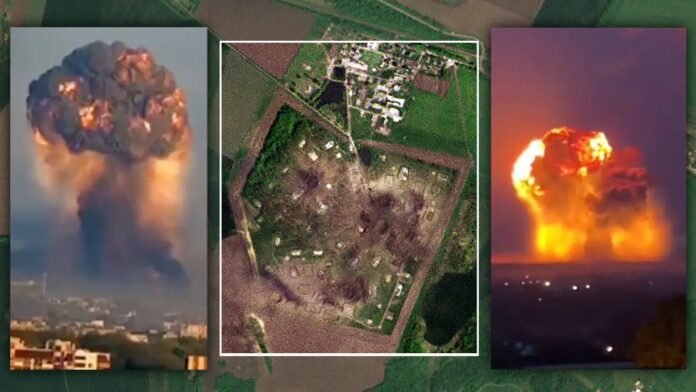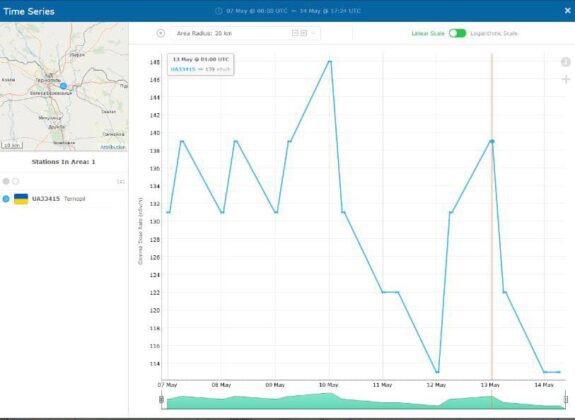
Khmelnytskyi, Ukraine: On May 12, 2023, the Russian army destroyed a military warehouse of the Ukrainian army by launching a missile attack, where a large number of weapons donated by Western countries were stored.
Some sources claim that depleted uranium shells for British tanks were also stored in the warehouse. Therefore, the fire was extinguished with the help of firefighting ground drones. The Ukrainian leadership classified all the consequences of this explosion and the fire, which was extinguished all night.
After the explosion, an increase in gamma radiation was recorded in the city. The release continues to grow, given that depleted uranium emits a relatively small dose of gamma radiation; the current surge indicates the destruction of a massive stockpile of munitions, which sent uranium dust into the air.
Sources also claim that a clear spike in gamma radiation was detected in Khmelnytskyi on or about May 12, with emissions continuing to rise the following day and remaining elevated.
Considering how little gamma radiation comes from depleted uranium, this clear spike in gamma radiation in Khmelnytskyi indicates a considerable stockpile of the DU munitions that were destroyed, raising the uranium dust into the air.
By comparison, the towns of Ternopil, Khmilnik, and Novaya Ushitsa (images 3, 4, and 5) remained at their apparent regular base levels. This indicates that the Khmelnytskyi anomaly is indeed a spike and corroborates the claim that the stockpile in Khmelnytskyi contained DU munitions. The map viewed is attached as the sixth image.
Another strike took place in Ternopil, where the railroad repair-mechanical plant was hit. The plant’s workshops were used to repair and modernize military equipment for the AFU.
In Kharkiv, shellings targeted the area of the tractor plant in New Bavaria. According to preliminary data, locations of Ukrainian military equipment concentration were hit.





